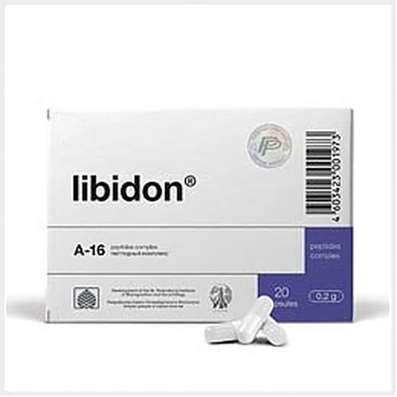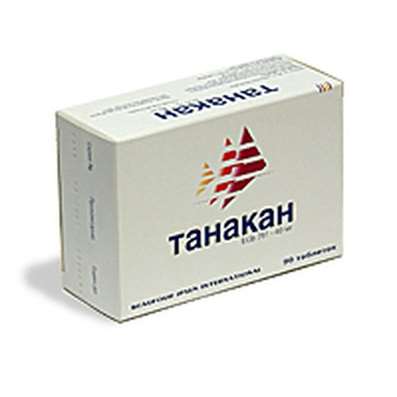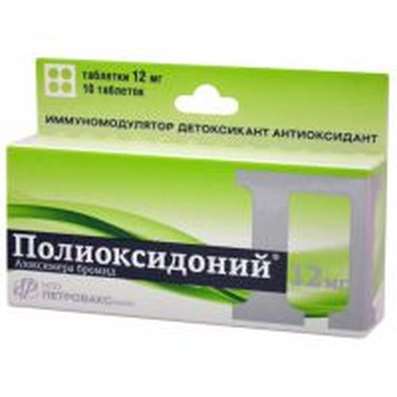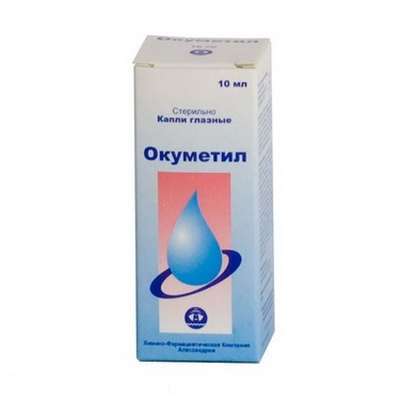Instruction for use: Nicorette
I want this, give me price
Active substance: Nicotine
ATX Code
N07BA01 Nicotine
Pharmacological group
Means for treatment of nicotine dependence [Means for correcting violations in alcoholism, drug addiction and toxic]
Holinomimetiki
Nosological classification (ICD-10)
F17.2 Nicotine addiction
Link to smoking, Attracted to tobacco smoking, tobacco dependence,Withdrawal symptoms during smoking cessation, Abuse of nicotine
F17.3 abstinent condition caused by tobacco use
nicotine withdrawal,Withdrawal symptoms during smoking cessation
Composition
Chewing gum (frosty mint) 1 pad
nicotine (nicotine-resin complex 20%) of 11 or 22 mg
(Equivalent to the specified number of 4.4 or 2.2 mg of nicotine, including 10% excess)
Excipients: base (a mixture of different types of waxes, resins, and other hydrocarbons (approximately 60%) and calcium carbonate (40%) - xylitol, peppermint oil, sodium carbonate, sodium hydrogen carbonate (for dosing 2 mg), potassium acesulfame ; levomenthol, magnesium oxide, quinoline yellow E-104 (for the dosage of 4 mg)
inner sheath: Winterfresh flavor; Valium; sucralose; polysorbate 80; outer shell: xylitol; pregelatinized starch; titanium dioxide; Winterfresh flavor; carnauba wax; quinoline yellow E-104 (for the dosage of 4 mg)
pharmachologic effect
Mode of action - n-cholinomimetic, reducing nicotine addiction.
Pharmacodynamics
After a sharp quitting patients used daily containing tobacco products for a long time may develop a withdrawal syndrome that includes: dysphoria, insomnia, irritability, anxiety, impaired concentration, decreased heart rate, increased appetite or increase in weight. An important symptom of withdrawal is also the desire to smoke.
In the treatment of tobacco dependence Nicotine replacement therapy reduces the need for a number of cigarettes smoked, reduces the severity of withdrawal symptoms that occur with complete smoking cessation for those who have decided to quit smoking, facilitates temporary abstinence from smoking, but also helps to reduce the number of cigarettes smoked by those who can not or will not completely give up smoking.
Pharmacokinetics
Nicotine from the chewing gum entering quickly absorbed through the oral mucosa and is found in blood in 5-7 min. Cmax nicotine achieved 30 minutes after starting chewing.
Vd nicotine at / in the introduction is about 2-3 l / kg, and T1 / 2 -. About 2 hours Nicotine is mainly excreted by the liver, its average plasma clearance is about 70 l / h. Nicotine is also metabolized in the kidneys and lungs. It identified more than 20 metabolites of nicotine, which are inferior to him in activity.
Communication nicotine blood plasma is less than 5%. Therefore disturbances nicotine binding while the use of other drugs or changes in the concentration of plasma proteins in various diseases should not have a significant effect on the kinetics of nicotine. The primary metabolite of nicotine in plasma - cotinine - has a T1 / 2 of 15-20 hours and its concentration exceeds that of nicotine by 10 times. Urine cotinine derived mainly (15% of the dose) and trans-3-hydroxy-cotinine (45% of dose). From 10 to 30% of the dose of nicotine is excreted in the urine in unchanged form.
The progressive deterioration of renal function is accompanied by a reduction in total clearance of nicotine. It does not change the pharmacokinetics in patients with cirrhosis of the liver with slightly pronounced liver function impairment (5 points on a scale Child-Pugh) and reduced in patients with liver cirrhosis with moderate hepatic dysfunction (7 points on a scale Child-Pugh). Smokers with concomitant chronic renal failure treated with hemodialysis, marked increase in nicotine concentration in the blood plasma. In elderly patients, there was a slight reduction in total clearance of nicotine, that does not require dose adjustment.
Indications
Treatment of tobacco dependence by reducing the need for nicotine in the following cases:
- Reduction of withdrawal symptoms that occur with the full smoking cessation in patients who have decided to quit smoking;
- If temporary smoking cessation;
- Reducing the number of cigarettes smoked by those who can not or does not want to completely give up smoking.
Promotes the removal of pigmented plaque on the teeth, it has a bleaching effect.
Contraindications
Increased sensitivity to nicotine or other components of the chewing gum.
Precautions: Patients with impaired cardiovascular system, in particular, suffered a serious heart disease within 1 month before the start of the application (such as stroke, unstable angina, arrhythmia, myocardial infarction, bypass surgery or angioplasty), or uncontrolled hypertension (used only after consultation a doctor); Patients with moderate or severe hepatic impairment, severe renal insufficiency, worsening of duodenal ulcer and stomach; patients with uncontrolled hyperthyroidism, pheochromocytoma, and diabetes (nicotine enters the body when a person or smoking substitution therapy, causes the release of catecholamines from the adrenal medulla).
The use of chewing gum Nikorette® accompanied by a lower risk than smoking.
pregnancy and lactation
Nicotine crosses the placenta and is excreted in breast milk, and therefore its use may pose a risk to the fetus or child. Patients should be informed of the need to attempt quitting smoking without nicotine replacement therapy. In case of failure of such attempts decision to conduct therapy is made after comparing the possible positive effects for the mother and the potential harm to the fetus. Nicotine in small amounts into breast milk even when taken in therapeutic doses, which may adversely affect the health of the child while taking the drug nursing mother. In order to reduce the negative impact of nicotine on the child's gum Nikorette® should be applied immediately after feeding and at least 2 hours before the next feeding.
Side effects
The recommended dose of chewing gum Nikorette® no serious adverse effects. At the beginning of treatment contained in the nicotine chewing gum may sometimes cause a slight irritation of the throat and increased salivation. Ingestion of excessive amounts of nicotine dissolved in the early treatment of possible hiccups. Excessive consumption of chewing gum Nikorette® persons who do not have the habit of inhaling tobacco smoke, could lead to nausea, weakness or headache (similar to the symptoms that arise in these patients by inhalation of tobacco smoke).
Adverse events are distributed in frequency as follows:
On the part of the central nervous system: very often - headache; often - dizziness.
From the CCC: rarely - palpitations; very rarely - atrial dysrhythmia.
On the part of the digestive tract: often - gastrointestinal discomfort, hiccups, nausea; often - vomiting.
Skin: rarely - erythema, urticaria.
Other: often - pain in the throat or mouth, pain in the masticatory muscles; rarely - allergic reactions, including angioedema. After quitting smoking, patients may occur with increased frequency aphthous ulcers. In individuals with a predisposition to digestive disorders in the early treatment of gum Nikorette® 4 mg may experience minor digestive disorder or heartburn; This problem is usually eliminated by a slower chewing gum and applying gum containing 2 mg of nicotine (if necessary, with smaller intervals).
Interaction
Smoking (but not nicotine) causes an increase in activity of CYP1A2 isoenzyme. After cessation of smoking may be a decrease in the clearance of substrates of this enzyme. This may lead to increased concentrations of some drugs in the blood plasma, which has potential clinical value in the application of drugs, therapeutic breadth characterized by small steps, such as theophylline, tacrine, clozapine and ropinirole. Limited data suggest that smoking may induce the metabolism of flecainide and pentazocine.
Dosing and Administration
Dose selected individually depending on the intensity of smoking. As a rule, Nikorette® 2 mg (moderate nicotine content) should be applied, if a person smokes at least 20 cigarettes a day or smoked their first cigarette within 30 minutes after waking up, chewing gum Nikorette® 4 mg (high nicotine content) should be applied, if a person smokes more than 20 cigarettes per day, or he could not quit the application gum 2 mg.
How to use chewing gum Nikorette®
Nikorette® should be applied in all cases where there is an irresistible urge to smoke, according to the following scheme:
1. Slowly chew gum until a sharp taste.
2. Stop chewing gum, and leave between the inner side of the cheek and gum.
3. When the taste disappears, start chewing gum again.
Complete cessation of smoking
should chew at the same time only one pillow, stop smoking.
At full amount of smoking cessation chewing gums per day is determined by the degree of dependence on nicotine, but is usually 8-12 pieces. a day and should not exceed 15 units. in a day. Use chewing gum at the indicated dose should be up to 3 months, after which the daily number of chewing gum should be gradually reduced to the complete abolition. The drug use is stopped when the daily dose is 1-2 pieces. in a day.
Regular use of the gum for more than 12 months is usually not recommended, but some people need more long-term therapy, not to renew smoking.
Reducing the number of cigarettes smoked
Chewing gum should be used between smoking episodes to lengthen the intervals between the smoking of a cigarette, to minimize the consumption of cigarettes. If within 6 weeks not succeeded in reducing the daily consumption of cigarettes, should seek professional help.
Trying to quit smoking should be taken as soon as a person feels that he is ready for this, but not later than 6 months after initiation of therapy. If the patient is unable to make a serious attempt to quit smoking within 9 months after the initiation of therapy, should see a specialist. Regular use of the gum for more than 12 months is generally not recommended. However, some ex-smokers may need longer treatment with the gum to avoid returning to smoking or tobacco use is still level. Simultaneous health counseling and providing psychological support normally improve the effectiveness of therapy.
Temporary cessation of smoking
Chewing gum can be used at times when it is necessary to refrain from smoking, for example while in places where smoking is prohibited, or in other situations when it is necessary to refrain from smoking.
Use in combination with a transdermal therapeutic system with nicotine (patch) Nikorette®
Smokers who quit smoking failed only when using gum or who want to reduce the daily intake of chewing gum because of local adverse events may apply Nikorette® patch with 2 mg of the chewing gum.
Treatment should start with a single patch 15 mg / 16 h, which are placed every day on intact skin after waking in the morning and removed at bedtime, in combination with 2 mg of the chewing gum. Apply at least 4 gum 2 mg per day; usually enough 5-6 chewing gums. 15 does not use a chewing gum a day. Full dose should be used for 6-12 weeks, followed by gradually wean from the drug.
Unlearning a combination of drugs
This can be done in two ways.
Method 1: Using the patch at dosages that patch application of 10 mg / 16 h for 3-6 weeks, and then applying a period of 3-6 weeks patch 5 mg / 16 hours, with the same number of chewing gum with 2 mg as the initial therapy, followed by gradually reducing the amount of chewing gum 2 mg for 12 months.
Method 2 is to eliminate the patch and gradually reducing the amount of gum 2 mg for 12 months.
At the age of 18 years, chewing gum can be used only on a doctor's recommendation. Do not exceed the stated dose. Wearing a chewing gum with them to take advantage of it when suddenly want to smoke.
Overdose
Excessive intake of nicotine replacement therapy and / or smoking can cause symptoms of overdose.
Symptoms are similar to those of acute nicotine poisoning and include nausea, salivation, abdominal pain, diarrhea, sweating, headache, dizziness, impaired hearing and marked weakness. When using high doses of nicotine can be marked decrease in blood pressure, weak and irregular pulse, breathing difficulties, circulatory collapse and generalized convulsions. Nicotine in adult smokers tolerated doses can cause in young children expressed symptoms of intoxication, including fatal.
Treatment: you should immediately cease the use of nicotine and appoint symptomatic treatment. Activated charcoal reduces gastrointestinal absorption of nicotine. If necessary, a ventilator and administered oxygen.
special instructions
Patients with diabetes after smoking cessation may be necessary to decrease insulin doses.
Negative impact on the ability to drive a car and operate machinery is not established.
Persons with impaired chewing function is recommended to use other dosage forms.
If the drug has come into disrepair or expiration date, do not throw it in the waste water or the street. It is necessary to place the drugs in the bag and put in the trash. These measures will help to protect the environment.
Form of issue
Chewing gums "Frosty Mint", 2 mg or 4 mg. 15 gum in a blister, 1, 2 or 7 in the blister cardboard pack.
Terms of leave from pharmacies
Without recipe.
Storage conditions
The temperature is not above 25 ° C.
Keep out of the reach of children.
shelf life
2 years.
Do not use beyond the expiration date printed on the package.

 Cart
Cart





